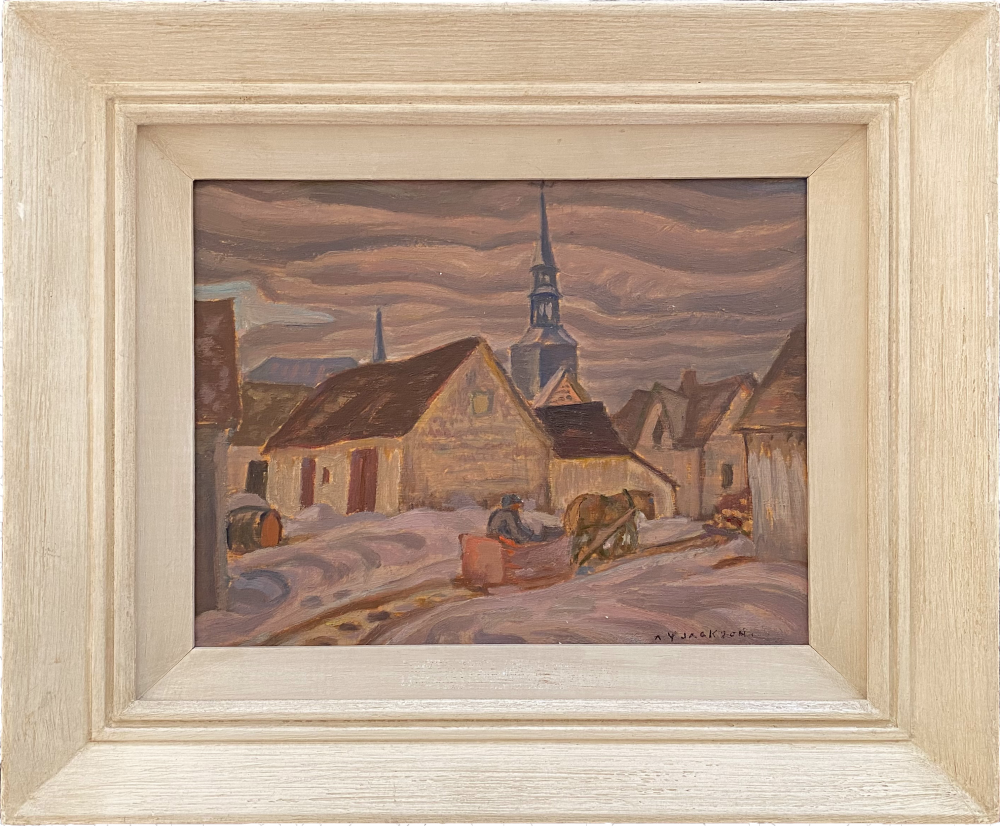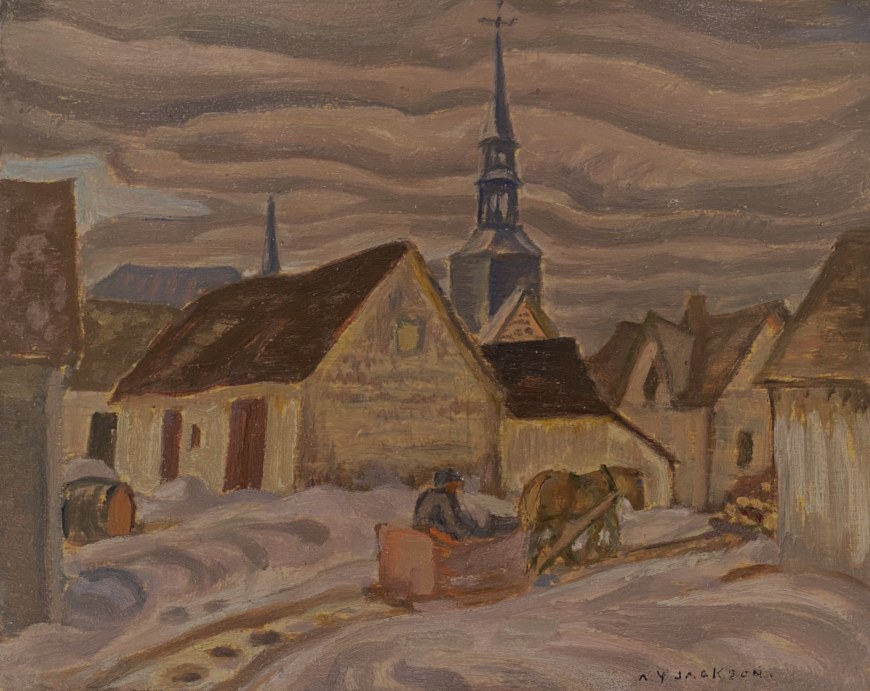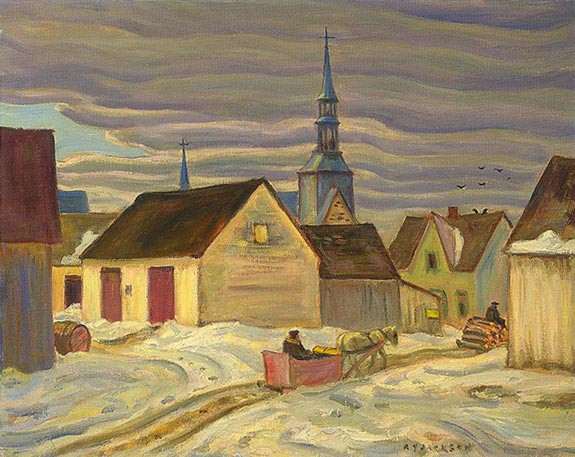-
Œuvres d'art
A.Y. JacksonCacouna, Quebec, 19351882-1974Oil on panel8 1/2 x 10 1/2 in
21.6 x 26.7 cmSoldInscriptions
signed, 'A.Y. JACKSON' (lower right); titled and dated by the artist, ‘Cacouna 1935 / Laing Galleries’ (lower, centre), inscribed by artist, ‘#797’ (upper, right), inscribed on label, ‘Property of / LAING Galleries’ (lower, centre), titled, dated, inscribed and signed by artist on paper label, ‘CACOUNA QUE / 1935 #797 / A.Y. JACKSON’ (upper, left)Provenance
Laing Galleries, Toronto.
Private collection, Montreal;
By descent to the present owners.
Documentation
N.J. Groves, “Chronology,” in Dennis Reid, Alberta Rhythm: The Later Works of A.Y. Jackson (Toronto: Art Gallery of Ontario, 1982), p. 93.
In 1921 Jackson made his first painting trip to the Lower Saint Lawrence with Albert Robinson. That year the two artists painted at Cacouna, on the south shore opposite Tadoussac at the mouth of the Saguenay River. In his 1958 autobiography Jackson wrote, “The village was a very picturesque place, piled up with snow, with a fine old parish church…” The same parish church seen in this sketch appears in his 1921 drawing reproduced in Naomi Groves’ wonderful book, A.Y.’s Canada (1968). While he contemplated going to Cacouna in the spring of 1927, it appears that he didn’t return there until spring 1935. On 18 April he wrote to Sarah Robertson from Saint Fabien, down river from Cacouna. “It will soon be time to turn homeward. I had hoped to have a whirlwind finish but the fates are against it. For a week it has rained, snowed and these last two days fog has blotted out everything. So I will stick it out five or six days more then go to Montreal. I expect when the fog lifts it will show that all the snow has gone. I had company for three weeks, Albert Cloutier who has a studio next to Lil’s [Lilias Newton]. He is a nice boy and worked very seriously. He is a commercial artist but very ambitious to paint. … The country is not very picturesque, not many old barns or houses and it takes a lot of rearranging. We went to Cacouna for three days and got nothing. It's all gas stations and bungalows. I was there with Robinson fifteen [actually fourteen] years ago but it has changed.” (National Gallery of Canada)
The modernization of Quebec’s rural villages and the erection of gas stations and garages as well as asbestos shingled houses, bungalows and fox farms became constant complaints in Jackson’s letters to his fellow Charlevoix painter Clarence Gagnon, then residing in Paris. The rolling rhythms of the sagging barns and houses were lost in these modern “monstrosities”. The landscape and architecture had lost their connection.
In spite of his complaints the village of Cacouna Jackson painted in 1935 appears to have changed little since 1921. As in his earlier paintings of Les Éboulements and Baie-Saint-Paul, the sheds and houses are closely clustered around the central church creating a feeling of intimacy in his depiction of the village. Two horse drawn sleighs, one carrying logs, the other a passenger, occupy a road that cuts into the composition from the lower left, past a leaning barn and wooden barrel and disappearing between the sheds centre right. The centre of the composition is defined by the peaked roofs and church spires that pierce the grey, rolling clouds.
This sketch was worked up into a canvas titled Cacouna, Quebec (fig. 1) that was sold at Heffel Fine Art Auction House on 2 May 2002 and incorrectly dated 1933. In the canvas Jackson extended the roadway to the right to include the driver sitting on the logs and enhanced the colours of the buildings in contrast to the more monochrome colouring of the sketch, truer to the light of an overcast winter day. The house centre right was now painted a lovely green and blue and he added a flock of crows on its roof and a cross on the spire over the apse of the church. Curiously, given his antipathy to the straight lines of new constructions, the walls of the shed with the red doors no longer sagged into the ground but rose straight from the snow.
Charles C. Hill for Alan Klinkhoff Gallery
All Rights Reserved
3sur 3

















